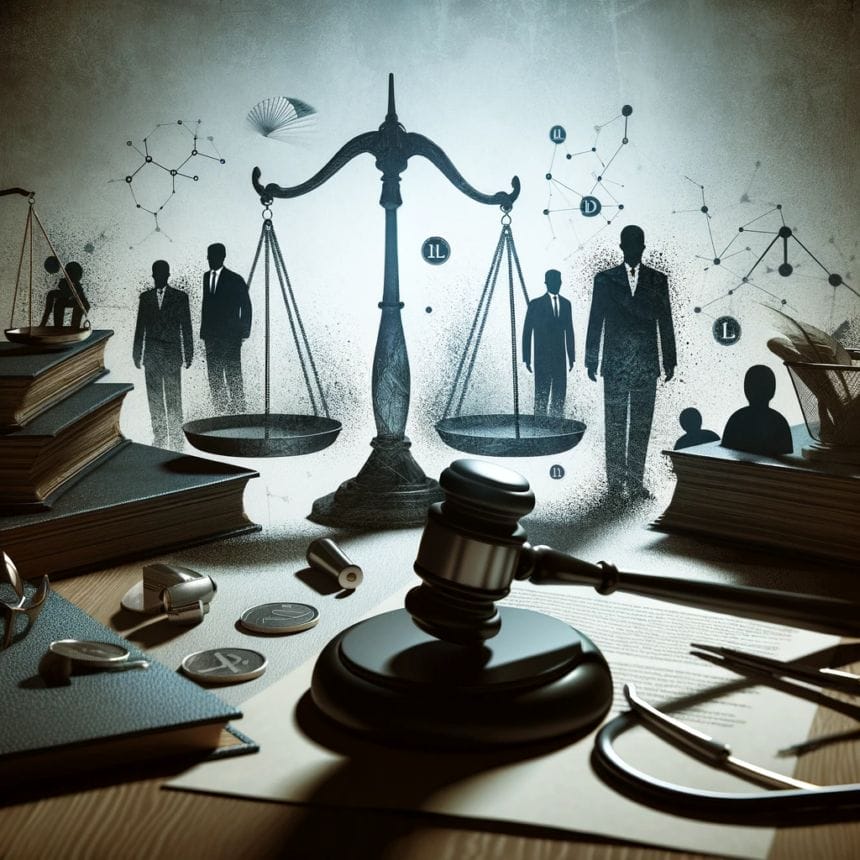By Kylee Carlin
Attorney, SW&L Attorneys
Have you or a loved one been injured by *fill in the blank type of pharmaceutical drug, vehicle malfunction, workplace accident, etc.?* I’m sure that’s how a majority of people imagine a personal injury (PI) lawyer’s article to begin. PI lawyers are renowned for their cheesy slogans, cringe-worthy advertisements, and major contributions to our litigious society. Despite these tendencies, here I will address a number of situations where businesses find themselves at risk for negligence lawsuits. Additionally, I will provide some easy steps that can be taken to hopefully prevent readers from seeing me in court.
What is Negligence anyway?
We’ve all heard the term “negligence” both in everyday life and likely on various lawyer TV shows. But what does it actually mean in the legal sense? The law defines negligence as the failure to act in accordance with the level of care that a “reasonable person” would have exercised under the same or similar circumstances. To prove a negligence claim under North Dakota law, the person who brings a claim has to show: (1) a duty of care owed by the person or entity they are bringing the claim against; (2) breach of that duty of care; (3) causation of injuries or damages; and (4) damages/injuries. Negligence is a broad type of legal claim that encompasses various types of injuries and accidents. From injuries occurring in motor vehicle crashes to injuries that happen as a result of a dangerous condition on someone’s property, negligence is a type of claim that is frequently brought against businesses and their owners.
Premises Liability
Premises liability isn’t a term the general public uses often, but it is often brought up. When thinking of premises liability, we often think of the classic slip and fall on a mopped floor in some big box store or chain restaurant. Certainly, these situations happen often enough, but premises liability cases are not limited to slip and fall incidents. Under North Dakota premises liability law, landowners owe a general duty to lawful entrants (in other words, people who aren’t trespassing) to maintain their property in a reasonably safe condition in view of all the circumstances, including:
- The likelihood of injury to another;
- The seriousness of the injury; and
- The burden of avoidingthe risk.
Depending on the type of business you operate or the land you own, the reasonability of harm differs. Naturally, if you are in business in some type of office setting, some of your primary responsibilities are to ensure that tripping hazards are minimized. This necessarily differs from a construction site wherein more stringent safety measures must be taken to avoid falling objects or dangerous machinery injuring individuals passing by.
In North Dakota, a safety concern for businesses to pay particular attention to is ice accumulation in parking lots and on sidewalks. Many jurisdictions outside of North Dakota relieve land owners from liability for natural accumulations of snow and ice because it is an “open and obvious danger.” But the North Dakota Supreme Court has declined this interpretation, reasoning that relief for landowners would undermine the principles of public responsibility. In other words, business owners can be sued for slip and fall incidents on icy walkways of their establishments.
Best practice for business owners in each of these scenarios is to be proactive, especially in icy and/or wet conditions. One tip I often give business owners is to set up a schedule of who is going to monitor the condition of the sidewalk and when. Miscommunications among business owners, managers, and employees can lead to neglect of basic care of the premises. Additionally, I recommend ensuring your business is well-lit, especially as daylight grows shorter. These tips seem obvious, but the plaintiff’s attorneys are kept busy throughout North Dakota with injuries that could have been prevented by a simple warning sign or sanding of the sidewalk.
Vicarious Liability
Often referred to as the “deep pockets” claim, vicarious liability is a legal rule that holds a person or company responsible for actions committed by their employees. Vicarious liability is a type of “indirect” liability, wherein, the employer themself doesn’t have to do anything wrong in order to be liable. The easiest example of a vicarious liability situation is if an employee causes a car accident while driving a company vehicle during working hours, the employer may be held responsible for any injuries caused by the employee. Although there are some exceptions to the rules on vicarious liability, an employer is generally vicariously liable for the negligence of an employee when the employee is carrying out the employer’s business.
Reducing the likelihood of vicarious liability also requires an employer to be proactive. Having appropriate policies in place regarding employee conduct is a great starting place. Making sure those policies are followed by both new employees and more senior employees is essential. Setting forth concrete expectations for safety, health, and respect in the workplace is the best way for a business owner to avoid employee negligence and the inevitable subsequent vicarious liability claim.
Negligent Hiring and Supervision
Similar to vicarious liability is a claim for negligent hiring or negligent supervision. Unlike vicarious liability, negligent hiring and supervision claims are a form of direct liability against an employer. A claim of negligent hiring/supervision can come about in a number of ways, including (but not limited to): (1) hiring an employee without sufficient knowledge of their background; (2) failing to give appropriate training and direction to employees; and (3) failing to instill policies or codes of conduct in the employment setting. Negligent supervision may affect any type of employer, but bears greater significance for employers supervising “risky” or “dangerous” activities
Decreasing your chances of a negligent hiring or negligent supervision claim can be aided by employers doing their due diligence in the hiring process as well as providing adequate training, oversight, and policies to employees.
Conclusion
There is no perfect way to ensure a negligence claim doesn’t occur in your business. The reality is, that no person actually meets the “reasonable person” standard all the time. However, with some preventative measures in place, your business will be in much better shape to avoid a negligence lawsuit.
If you have questions or need to seek out an attorney, please contact SW&L Attorneys.
SW&L Attorneys
4627 44th Ave S Ste 108 Fargo, ND
701.297.2890
swlattorneys.com
Facebook | /SWLattorneys
LinkedIn /company/swlattorneys








